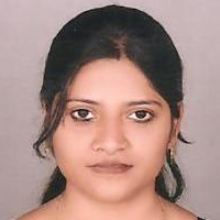International Journal of Intelligent Systems and Applications (IJISA)
IJISA Vol. 11, No. 1, 8 Jan. 2019
Cover page and Table of Contents: PDF (size: 786KB)
Development of Hybrid Learning Machine in Complex Domain for Human Identification
Full Text (PDF, 786KB), PP.55-66
Views: 0 Downloads: 0
Author(s)
Index Terms
Eigenface, fisherface, genetic fuzzy clustering, complex neural network, complex resilient propagation, biometric
Abstract
This paper presents a hybrid learning machine for human identification. It is a merger of eigenface with fisherface method, genetic fuzzy clustering and complex neural network. The non-linear aggregation based summation and radial basis function neural networks (NLA-SRBF NNs) are proposed as one of the functional component of the novel learning machine. The architecture of NLA-SRBF NNs incorporates hidden neurons, with summation and radial basis aggregation, and output neurons with only summation aggregation, along with complex resilient propagation (ČRPROP) learning procedure. The improved learning and speedy convergence of NLA-SRBF NN enables the hybrid machine to provide better recognition accuracy. The learning machine consists of feature extraction, unsupervised clustering and supervised classification module. The aim of our proposal is to enhance the performance of biometric based recognition system. The efficacy and potency of our hybrid learning machine demonstrated on three benchmark biometric datasets-extended Cohn-Kanade, FERET and AR face datasets to comprehend the motivation. The performance comparisons of different variations of hidden neuron and learning algorithm thoroughly presented the superiority of the proposed NN based hybrid learning machine.
Cite This Paper
Swati Srivastava, Bipin K. Tripathi, "Development of Hybrid Learning Machine in Complex Domain for Human Identification", International Journal of Intelligent Systems and Applications(IJISA), Vol.11, No.1, pp.55-66, 2019. DOI:10.5815/ijisa.2019.01.06
Reference
[1]Vijayakumari V. Face recognition techniques: A survey. World journal of computer application and technology, 2013, 1(2):41-50.
[2]Islam MN, Loo CK. Geometric feature-based facial emotion recognition using two-stage fuzzy reasoning model. In International Conference on Neural Information Processing, 2014, pp. 344-351, Springer, Cham.
[3]Li B, Meng MQ. Tumor recognition in wireless capsule endoscopy images using textural features and SVM-based feature selection. IEEE Transactions on Information Technology in Biomedicine, 2012, 16(3):323-329.
[4]Shi B, Bai X, Yao C. An end-to-end trainable neural network for image-based sequence recognition and its application to scene text recognition. IEEE transactions on pattern analysis and machine intelligence, 2017, 39(11):2298-2304.
[5]Li CK. A sigma-pi-sigma neural network (SPSNN). Neural Processing Letters, 2003, 17(1):1-9.
[6]Epitropakis MG, Plagianakos VP, Vrahatis MN. Hardware-friendly higher-order neural network training using distributed evolutionary algorithms. Applied Soft Computing, 2010, 10(2):398-408.
[7]HOMMA N, GUPTA MM. A General Second-order Neural Unit. Bulletin of College of Medical Sciences, Tohoku University, 2002, 11(1):1-6.
[8]Chaturvedi DK, Mohan M, Singh RK, Kalra PK. Improved generalized neuron model for short-term load forecasting. Soft Computing, 2004, 8(5):370-379.
[9]Tripathi BK, Chandra B, Kalra PK. The generalized product neuron model in complex domain. In International Conference on Neural Information Processing, 2008, pp. 867-876, Springer, Berlin, Heidelberg.
[10]Zhang M, Xu S, Fulcher J. Neuron-adaptive higher order neural-network models for automated financial data modeling. IEEE Transactions on Neural Networks, 2002, 13(1):188-204.
[11]Tripathi BK, Kalra PK. On efficient learning machine with root-power mean neuron in complex domain. IEEE transactions on neural networks, 2011, 22(5):727-738.
[12]Kumar S, Tripathi BK. Root-Power Mean Aggregation-Based Neuron in Quaternionic Domain. IETE Journal of Research, 2018, pp.1-19.
[13]Zeiler MD. ADADELTA: an adaptive learning rate method. arXiv preprint arXiv:1212.5701. 2012 .
[14]Chen X, Tang Z, Li S. An Modified Error Function for the Complex-value Backpropagation. Neural Information Processing-Letters and Reviews, 2005 , 8(1).
[15]Luo X, Patton AD, Singh C. Real power transfer capability calculations using multi-layer feed-forward neural networks. IEEE Transactions on Power Systems, 2000, 15(2):903-908.
[16]Aizenberg I, Paliy DV, Zurada JM, Astola JT. Blur identification by multilayer neural network based on multivalued neurons. IEEE Transactions on Neural Networks, 2008, 19(5):883-898.
[17]Hirose A. Complex-valued neural networks. Springer Science & Business Media, 2012.
[18]Riedmiller M, Braun H. A direct adaptive method for faster backpropagation learning: The RPROP algorithm. In IEEE International Conference on Neural Networks, 1993, pp. 586-591.
[19]Wang Z, Jiang M, Hu Y, Li H. An incremental learning method based on probabilistic neural networks and adjustable fuzzy clustering for human activity recognition by using wearable sensors. IEEE Transactions on Information Technology in Biomedicine, 2012, 16(4):691-699.
[20]Oh SK, Yoo SH, Pedrycz W. Design of face recognition algorithm using PCA-LDA combined for hybrid data pre-processing and polynomial-based RBF neural networks: Design and its application. Expert Systems with Applications, 2013, 40(5):1451-1466.
[21]Liu C, Wechsler H. Gabor feature based classification using the enhanced fisher linear discriminant model for face recognition. IEEE Transactions on Image processing, 2002, 11(4):467-476.
[22]Er MJ, Wu S, Lu J, Toh HL. Face recognition with radial basis function (RBF) neural networks. IEEE transactions on neural networks, 2002, 13(3):697-710.
[23]Khan SS, Quadri SM, Peer MA. Genetic Algorithm for Biomarker Search Problem and Class Prediction. International Journal of Intelligent Systems and Applications, 2016, 8(9):47.
[24]Sheng W, Howells G, Fairhurst M, Deravi F. Template-free biometric-key generation by means of fuzzy genetic clustering. IEEE Transactions on Information Forensics and Security, 2008, 3(2):183-191.
[25]Lucey P, Cohn JF, Kanade T, Saragih J, Ambadar Z, Matthews I. The extended cohn-kanade dataset (ck+): A complete dataset for action unit and emotion-specified expression. In IEEE Computer Society Conference on Computer Vision and Pattern Recognition Workshops (CVPRW), 2010, pp. 94-101.
[26]Feret face database. https://www.nist.gov/itl/iad/image-group/color-feret-database.
[27]Martinez AM. The AR face database. CVC Technical Report24. 1998.

